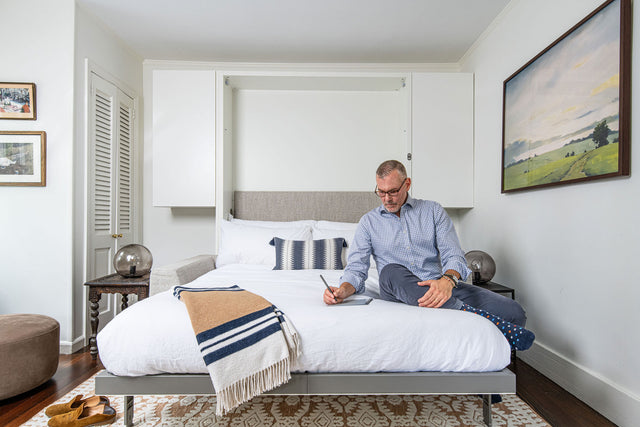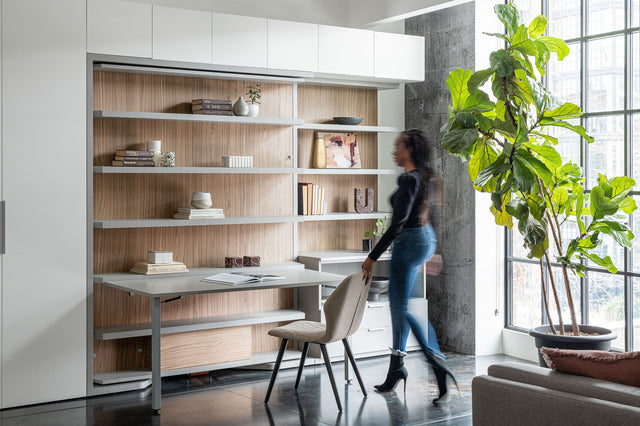Small Changes to Make Your Home More Sustainable
We all want to do our part to achieve a smaller carbon footprint and mitigate the devastating impact of climate change. Luckily, you don't have to take drastic measures to make a difference in the world. If every person in the world made a tiny adjustment to their lifestyle and habits, imagine how quickly the cumulative effects could add up.
You can be the change by starting in your home — and there are numerous ways to achieve this. Read on for ways to make your home more sustainable.
What Is Sustainability?
Sustainability is a broad concept covering various socioeconomic and environmental aspects and includes the three pillars of sustainability that form the heart of this ideology. In short, it speaks to how people are constantly trying to identify and implement ways to find a balance between using human-made and natural resources to promote economic, technological and social development — all while attempting to minimize the carbon emitted through our actions.
Over the years, we have become more aware of our environmental impact and continuously innovate better ways to protect it. This process has been slow, yet many individuals and even businesses have started adopting a greener mindset and approach to doing things. Using eco-friendly products at home and in the workplace is one way to make a positive change.
Your home is your haven, and is likely where you spend most of your time. We've listed a few tips to make your home more sustainable that will benefit you, your loved ones and our precious environment.
1. Unplug Devices

Unplugging all your electronic devices when they're not in use is a simple, money-saving habit to get into. It might seem insignificant, but it will reduce your energy consumption over time. That's because we waste electricity in our households due to appliances that consume “phantom energy” when not in use.
Some devices that require more electricity than others include your stove, washer and dryer, hairdryer and video game consoles. Even small gadgets like cellphone chargers use phantom energy. We tend to leave them plugged in so they're easy to access, but the current still runs through the cable despite the absence of a phone.
One suggestion would be to monitor your electricity consumption over a few days while you have these appliances plugged in and not in use, then unplug them and compare how many kilowatts your appliances and devices use in both states. With simple math, you can figure out how much money you can save by unplugging them.
Another way to combat this is by installing power strips, making managing numerous plugs in one location easier.
2. Switch to a Smart Thermostat
An additional tip to make your home sustainable is to install a smart or programmable thermostat that will automatically regulate your temperature settings. For example, if you'll be away from home all day, you can set the thermostat to remain off until you return home, saving you money and energy.
Since smart thermostats connect via Wi-Fi, they have fully functional software that relies on regular updates to keep it performing optimally. An alternative to installing a thermostat is insulating your doors and windows, which will also help regulate your home's temperature.
3. Install Solar Lighting and Panels
Another small change to make your home more sustainable includes installing solar lights and panels. Going solar requires an initial upfront investment that will pay for itself in the long run. Homeowners can also claim 30% back on their income taxes when installing solar systems, making them more affordable. Here are a few benefits of doing so:
- Save money on otherwise costly utility bills with reduced electricity consumption.
- Your home needs minimal sunlight for the panels to be efficient, meaning you can source energy even with limited light.
- Continue using electricity with off-grid battery storage during power outages.
- Increase your home's resale with an appealing upgrade.
If you'd rather opt for a less expensive way to light your home, energy-efficient LED bulbs will last longer and save you money. Take this one step further by replacing current appliances with Energy Star-rated ones that will further reduce energy costs.
Save even more by taking advantage of the available natural light. Open windows and blinds and let the light shine and warm up your home at no cost to you. You will also enjoy the natural health benefits of ventilating your home by opening windows to allow fresh air inside.
4. Use Eco-Friendly Household Products
Plastic pollution is a global crisis and one of the primary reasons we put so much effort into making eco-friendly changes. Here are a few things you can do to make your home more sustainable:
- Avoid single-use plastic products like shopping bags and containers. Instead, choose glass or other reusable bottles.
- Switch from paper towels to cloths you can wash and use repeatedly.
- Replace plastic straws with metal or silicone ones.
- Opt for eco-friendly products instead of harsh chemicals when cleaning your home.
Wherever possible, try to implement the three Rs — reduce, reuse and recycle.
5. Save Water
While saving energy is crucial, you can also take small steps to use less water. For instance, you could try to get into the habit of:
- Doing less frequent loads of laundry.
- Shutting off the tap when brushing your teeth.
- Reducing shower time to at least two minutes, if possible.
- Fixing any visible leaks around the house.
- Collecting rainwater in barrels and using it for tasks like washing your car and watering your yard.
These sustainable tips for your home may take some time and effort to implement, especially in larger households, but even tiny adjustments will add up to make a difference.
6. Incorporate Sustainable Furniture

One last tip we'll cover is using sustainable furniture in your home. These primarily consist of recyclable or natural materials. Perhaps more importantly, the manufacturing process aims to reduce the negative impact of producing these unique pieces. You'll enjoy some of these benefits and peace of mind when you purchase sustainable furniture.
- Ethical sourcing: Manufacturers with strong ethical values encourage trust and reliable service delivery.
- Reduced waste: Mindful manufacturers avoid wasting materials that will end up in landfills and therefore implement recycling management systems to reuse them as far as possible.
- Renewable material: The specific materials used to manufacture sustainable furniture are natural, nontoxic and come from trusted sources. These include bamboo, composite wood and other materials that are easy to recycle when they reach the end of their life span.
Make Your Home More Sustainable With Resource Furniture
Resource Furniture is at the forefront of creating sustainable living spaces for our valued clients. We are proud of our manufacturing process, which involves sourcing eco-friendly materials while reducing our carbon footprint as much as possible.
We want to help you make meaningful decisions to move toward a kind, conscious home and future. Our sustainable wall beds are among our top picks, offering multifunctionality, comfort, luxury and style all in one attractive package. We also sell various beautiful, versatile tables and seating to complement your home.
You can view our products online or in-person at one of our showrooms. Find your nearest showroom, and book an appointment today!
Popular posts

Transforming Spaces: A Real-World Look at the LGM Bookshelf Wall Bed

A Contemporary Luxury Condo in Toronto: A Showcase of Italian-Inspired Design

How the Tonale Sofa Wall Bed Reinvented a Spare Room

Ambitious Venice Beach Investor Chooses the LGM Murphy Bed on Backed by the Bros

Dining Room Table That Expands






